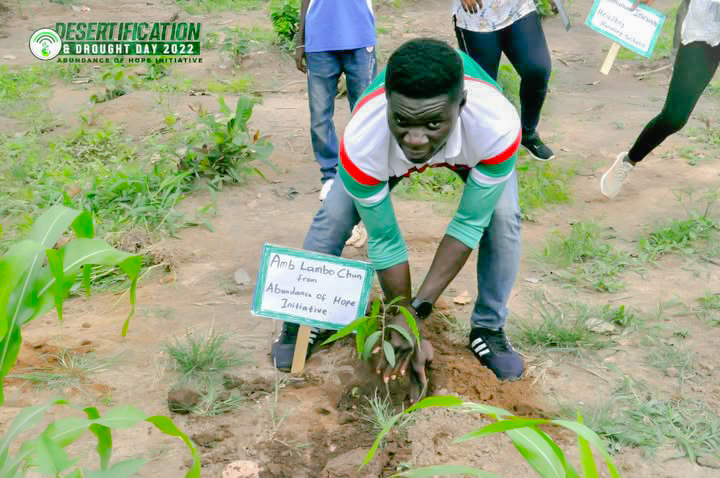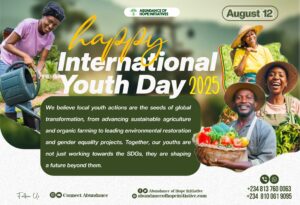Introduction
It is now more important than ever to find scalable and sustainable solutions as the world community struggles with the growing effects of climate change. Afforestation is a potent, natural remedy among the many strategies for lowering atmospheric carbon dioxide (CO₂) and reestablishing ecological balance. Afforestation refers to the practice of growing trees in regions that have not been previously forested, presenting tremendous potential for absorbing greenhouse gases (GHGs), boosting biodiversity, and enhancing environmental resilience.
Afforestation stands out in the battle against climate change because it is affordable, scalable, and has long-term advantages. Even while technology-driven solutions like carbon capture and storage (CCS) have their uses, afforestation is a crucial tactic for both rich and developing nations since it makes use of trees’ innate capacity to absorb carbon.
Understanding Afforestation
Afforestation is not the same as reforestation, which entails growing trees again in places that were once wooded but were destroyed for farming, logging, or natural catastrophes. Degraded grasslands, deserts, and abandoned agricultural fields are examples of areas that were never or hardly ever wooded and are the focus of afforestation. New forest ecosystems that are capable of carrying out vital ecological tasks, such as regulating the water cycle, sequestering carbon, and generating habitat, have to be established.
Trees absorb carbon naturally. They take up CO₂ from the environment through photosynthesis and store it in their biomass, which includes their roots, leaves, branches, and trunks. This method lowers the greenhouse effect, the main cause of global warming, in addition to removing carbon from the atmosphere. Afforestation is therefore a crucial instrument for reaching net-zero emissions, a major objective in global climate accords such as the Paris Accord.
The Role of Afforestation in Climate Change Mitigation
The buildup of greenhouse gases, especially carbon dioxide, in the atmosphere is the main cause of climate change. Since the Industrial Revolution, human activities, including burning fossil fuels, deforestation, and industrial processes, have significantly raised the amount of CO₂ in the atmosphere. The Intergovernmental Panel on Climate Change (IPCC) states that significant emission reductions and the removal of existing carbon from the atmosphere are necessary to keep global warming to 1.5°C over pre-industrial levels.
Afforestation contributes to climate change mitigation in a number of ways:
- Carbon Sequestration
This is afforestation’s most obvious and measurable effect. Large volumes of CO₂ can be sequestered by recently planted trees, assisting in the offset of emissions from industries such as energy and transportation. It is estimated that, depending on the kind of trees and the surrounding environment, a mature, healthy forest can trap 2.5 to 10 metric tons of CO₂ per hectare annually.
- Control of Temperature
By offering shade and promoting evapotranspiration—the process by which trees release water vapor into the atmosphere—forests aid in cooling the Earth’s surface. This counteracts the warming effect of urbanization and deforestation by assisting in local and regional cooling.
- Conserving Water and Preserving Soil
Enhancing water infiltration, preventing erosion, and improving soil structure are all benefits of reforestation. While the tree canopy lessens the force of rains, the roots sustain the soil. In addition to serving as natural water reservoirs, forested landscapes also help control water flow and lower the likelihood of droughts and floods, which are both becoming more common as a result of climate change.
- Enhancement of Biodiversity
Wildlife habitats are created by reforestation, which boosts biodiversity. In turn, this biodiversity promotes ecosystem resilience, which increases the ability of natural systems to adjust to shifting climatic conditions.
Challenges of Afforestation
Despite its potential, afforestation comes with several challenges that need to be addressed to ensure long-term success:
- Land Availability and Competition
In many regions, land is already under pressure for agriculture, housing, and infrastructure. Designating new areas for forests can lead to land-use conflicts, particularly in regions with high population density.
- Monoculture Plantations
Poorly planned afforestation often results in monoculture plantations—the planting of a single species over large areas. While these may absorb carbon quickly, they can lead to soil degradation, biodiversity loss, and increased vulnerability to pests and diseases.
- Water Demand
Some fast-growing tree species used in afforestation (like eucalyptus) consume large amounts of water, which can strain local water supplies, especially in arid regions.
- Carbon Accounting Complexity
The actual carbon sequestration potential of a forest depends on factors like tree species, growth rates, soil type, and management practices. There’s also the issue of “carbon permanence”—forests must be protected from fires, illegal logging, and pests to ensure the carbon stays locked in for decades.
Best Practices for Effective Afforestation
To maximize climate benefits and minimize drawbacks, afforestation must follow ecologically sound and socially inclusive practices:
- Use Native and Diverse Species
Planting a diverse mix of native tree species improves ecosystem health, supports local biodiversity, and enhances resilience to climate variability.
- Engage Local Communities
Community involvement is key to the success and sustainability of afforestation projects. Local populations should be engaged in planning, planting, and managing the forests, with clear benefit-sharing mechanisms.
- Monitor and Maintain
Afforestation is not a one-time activity. Trees need regular maintenance, protection from grazing, and periodic assessments to track survival rates and growth. Digital tools like GIS and remote sensing can aid in monitoring large-scale projects.
- Integrate with Broader Climate Strategies
Afforestation should complement other climate actions like emission reductions, renewable energy expansion, sustainable agriculture, and urban greening. It must not be used as a license to continue polluting but as part of a comprehensive climate strategy.
The Way Forward
Afforestation is more than just planting trees—it’s about healing the planet, restoring ecosystems, and securing a future for generations to come. In the context of climate change mitigation, it offers a powerful, long-term strategy to sequester carbon, enhance biodiversity, and build climate-resilient landscapes. But to succeed, afforestation efforts must be strategic, inclusive, and sustained. They must prioritize ecological balance, social equity, and long-term stewardship. When done right, afforestation doesn’t just mitigate climate change—it transforms lives, protects nature, and gives hope for a greener, more sustainable future.
As the world confronts the climate crisis, the Abundance of Hope Initiative is initiating an afforestation effort in the green area of the Federal University, Lafia, which, when kick-started, offers a nature-based, cost-effective, and scalable solution to remove carbon from the atmosphere.



